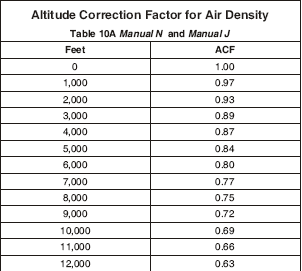Great Info guys but my head is completely swimming. Going back to the original question, If I am installing the furnace and I want to measure the amount of BTU's it is outputing taking into account my elevation what do I need to do? An example with numbers would be great. Can we use a 900 ft elevation? Thanks very much.





 Reply
Reply


 Or maybe I should just call myself stupid and quit trying to understand this.
Or maybe I should just call myself stupid and quit trying to understand this.
